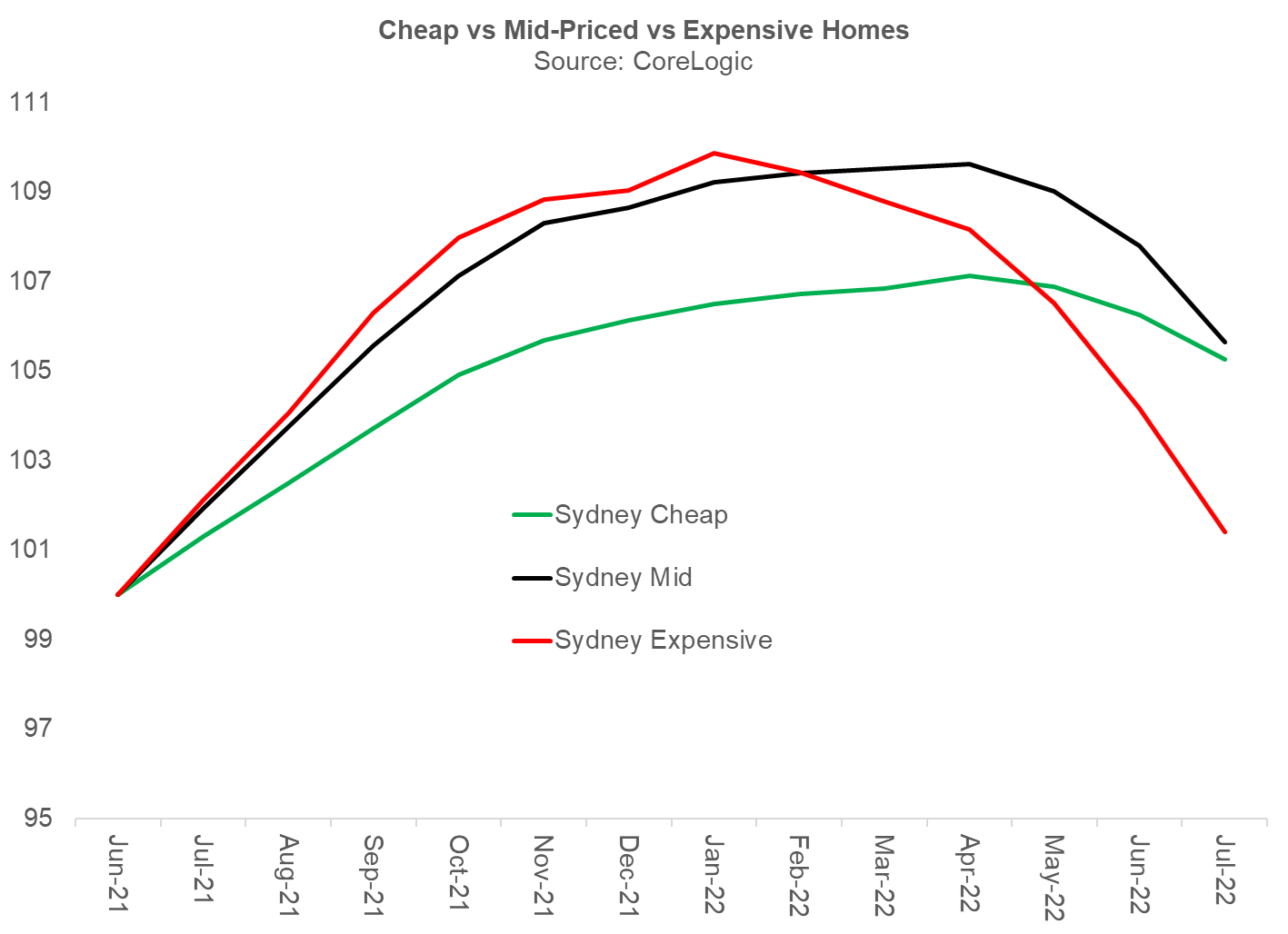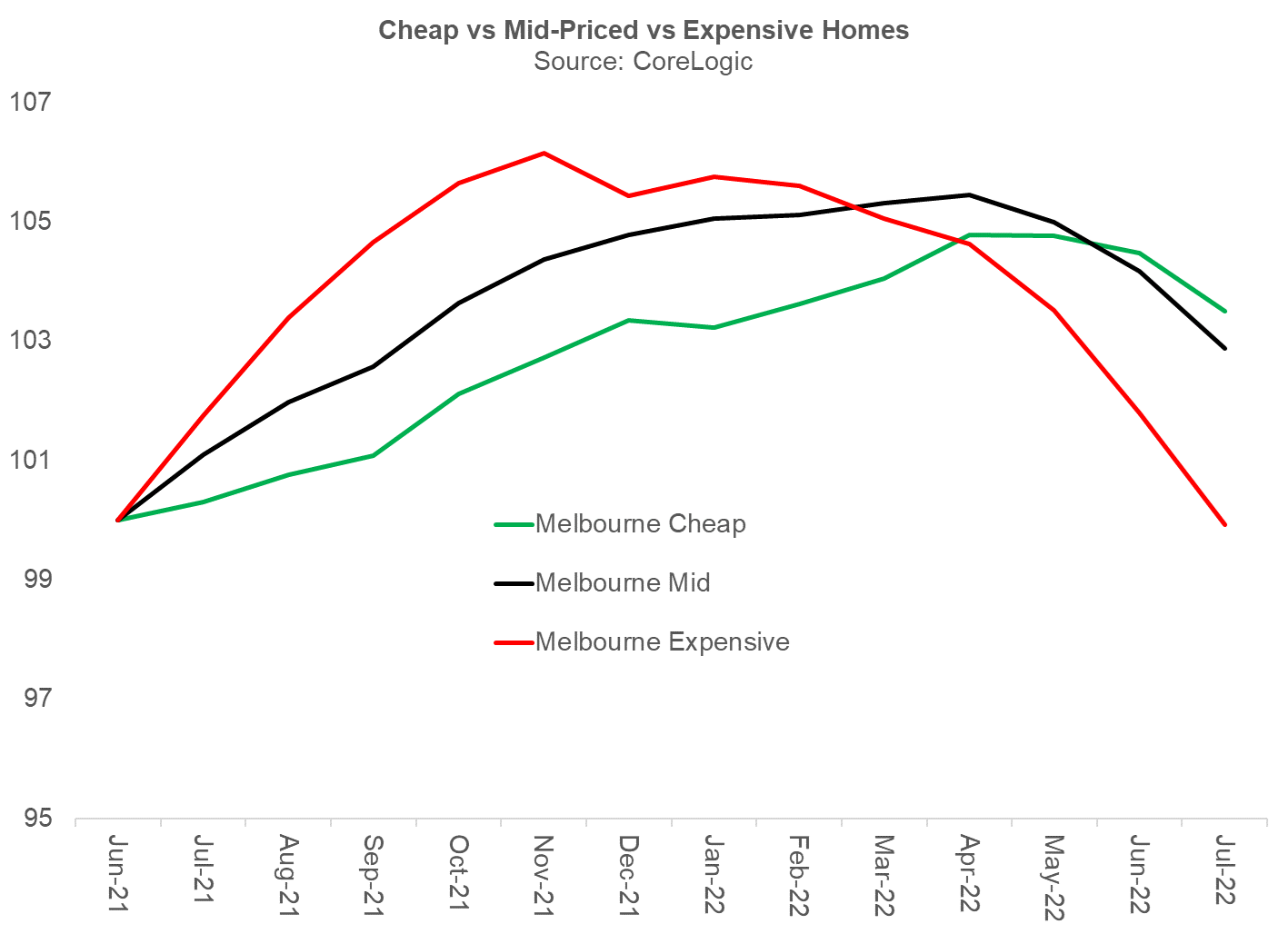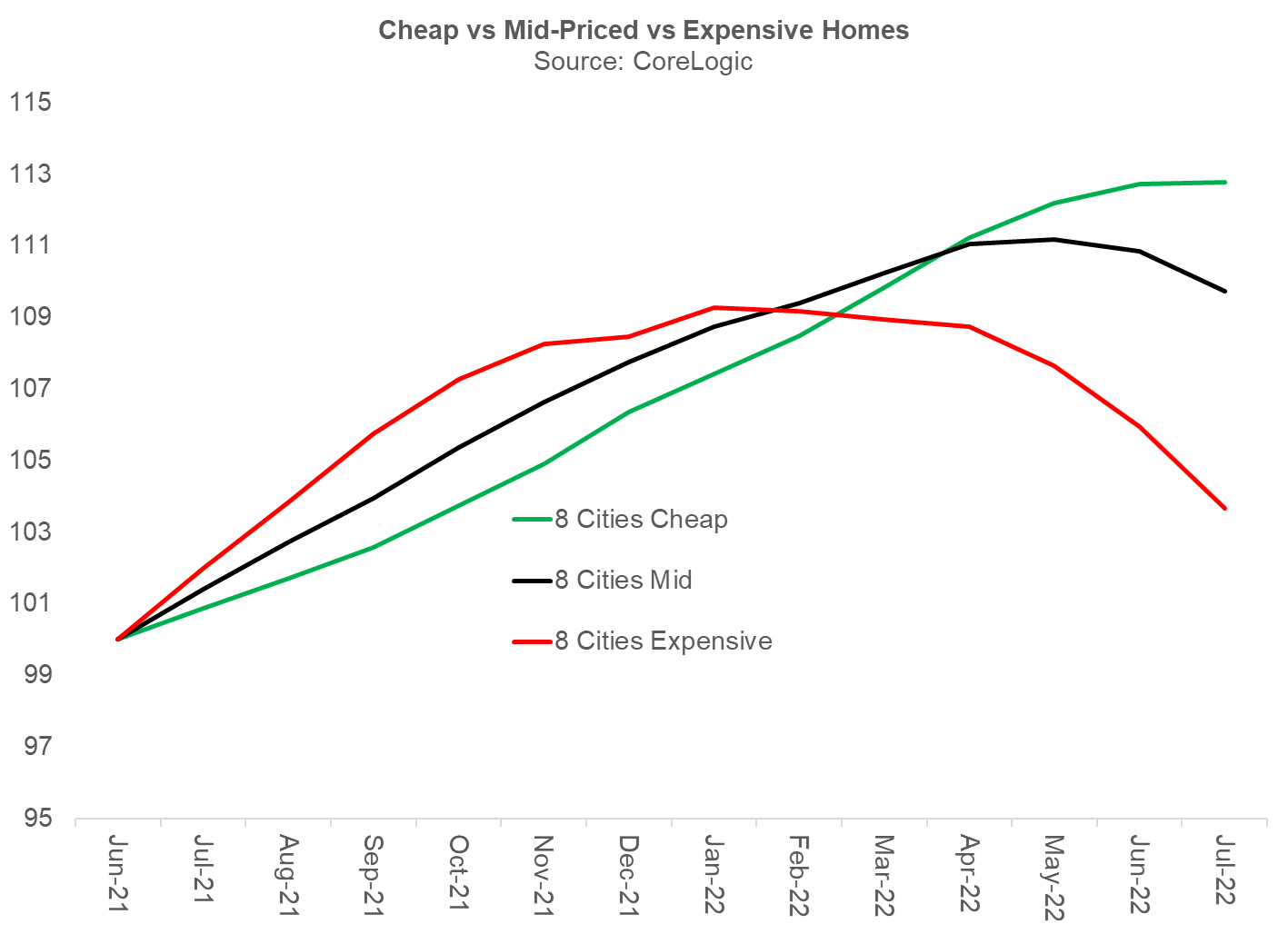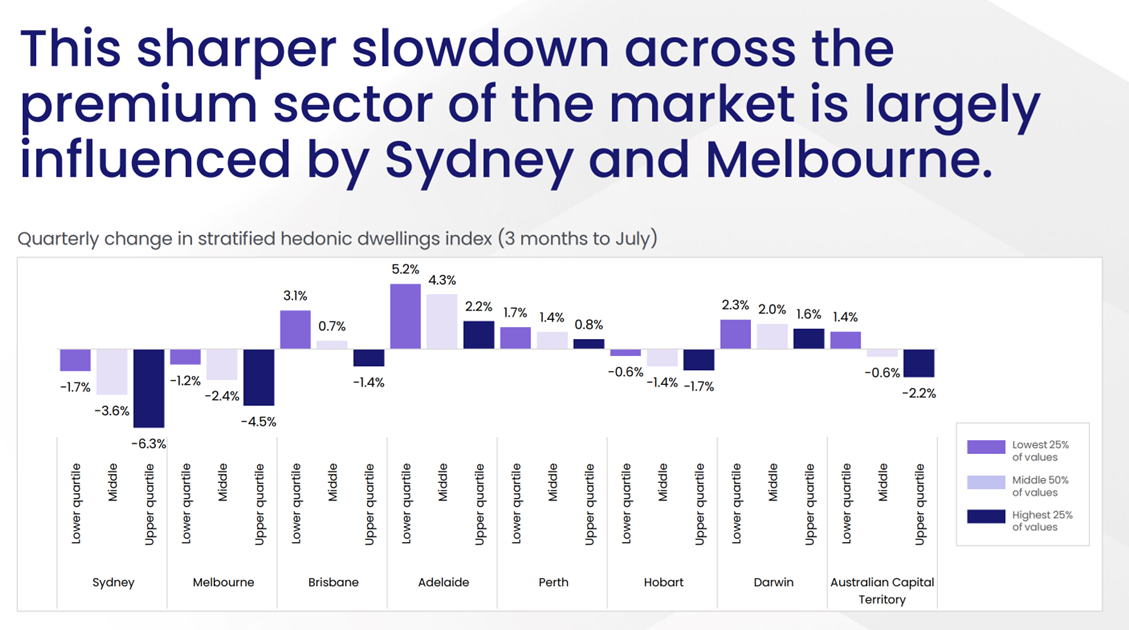Luxury housing market is tanking, contrary to what real estate agents claim...
I constantly hear real estate agents tell me how resilient the top-end of the housing market is. There are numerous narratives bandied around, but the essential message is that the luxury market is "insulated" from the woes evidenced across cheaper sectors.
I've always responded that this is completely inconsistent with my understanding of how the top-end of the real estate market behaves based on the available empirical data.
It is much more illiquid, highly pro-cyclical, and tends to be significantly more volatile than the mass market. It is also typically much more sensitive to big shifts in financial markets, which means that it normally leads the cheaper segments.
Since December 2021, global equities have been smashed, crypto has lost more than 70% of its value, and fixed-income has suffered record losses. Instinctively, it would be hard to imagine that the top-end of the housing market would be immune to these moves.
A team I established back in 2003 created the CoreLogic daily "hedonic" house price indices, and one of the innovations we developed was a "stratified" version of these benchmarks that broke the market up into "cheap", "mid-priced", and "expensive" areas. Specifically, the CoreLogic index is divided into three different sub-categories: the cheapest 25% of properties; the middle 50%; and the most expensive 25%. Through the various housing cycles since 2007, these "stratified" hedonic indices have consistently highlighted how volatile the luxury end of the market is.
I had not had time to check the stratified hedonic benchmarks until this morning, when I pulled down the data and created the following charts. The results confirmed my priors and conformed with every preceding cycle: namely, that the luxury housing market is getting smashed a lot harder than less expensive sectors. You can see from the three charts below that in Sydney, Melbourne, and across the 8 capital cities, the most expensive 25% of properties started declining in value much earlier than the rest of the market. In Sydney, luxury homes started rolling over in January compared to the cheapest properties, which only began losing value in April. In Melbourne, luxury dwelling peaked in November 2021 while the bottom-end of the market held ground until April/May. A similar story is evident across the 8 capital cities.



Speaking to CoreLogic's head of research, Tim Lawless, this morning (before 7am!), he mentioned that his analysis had arrived at the same results. Tim sent me the following charts that quantify the change in dwelling values in cheap, mid-market, and premium areas over the last 3 months. In every market, the most expensive areas are materially underperforming less expensive homes. In Sydney, for example, luxury home values have fallen 6.3% over the last 3 months in contrast to the cheapest 25% of properties, which have only declined by 1.7%. In Melbourne, expensive homes have lost 4.5% in the last quarter compared to just 1.2% for the cheapest dwellings. Even in cities like Adelaide and Perth where prices have risen over the last 3 months, the top-end of the market has performed worst.

Since I am long expensive property myself, delivering this bad news is not much fun! While it might not win us many friends amongst property developers, real estate agents, and other spruikers, it is important that we address the various myths being bandied around about the housing market right now given how crucial it is for understanding the outlook for the broader macroeconomy.
These trends will only be amplified by the RBA's decision to hike interest rates by another 50 basis points in August, which has slugged borrowers with an unprecedented 175 basis points of hikes in circa three months. In October last year, we were the first analysts to forecast a large draw-down in Aussie house prices, starting in 2022. Specifically, we projected that the Aussie housing market would correct by a record 15-25% after the first 100 basis points of RBA hikes, which we expected to commence in mid 2022. That prediction looks to be playing out right now...
Our Intellectual Edge: Making Every Basis Point Count
Our edge is in “alpha” generation in liquid, high-grade credit in contrast to traditional fixed-income strategies that drive returns through adding more interest rate duration risk, credit default risk, and/or illiquidity risk (or “beta”). Click here to find out more about us and the products we have available.
2 topics

